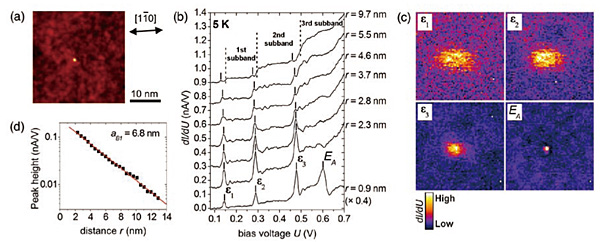Direct Measurement of the Binding Energy and Bohr Radius of a Single Hydrogenic
Defect in a Semiconductor Quantum Well
It is well known that the behavior of donor impurities, which are very
important for semiconductor devices, can be approximately understood by
the hydrogenic model. The two fundamental properties are the binding energy
and the Bohr radius. However, These values have not been characterized
for a single donor before. By measuring the local density of states (LDOS)
in the vicinity of the defect at the semiconductor quantum well surface
using low-temperature scanning tunneling microscopy (STM), we have succeeded
in determining both the binding energy and the Bohr radius. (Page 28)
[back] [Top] [Next]
